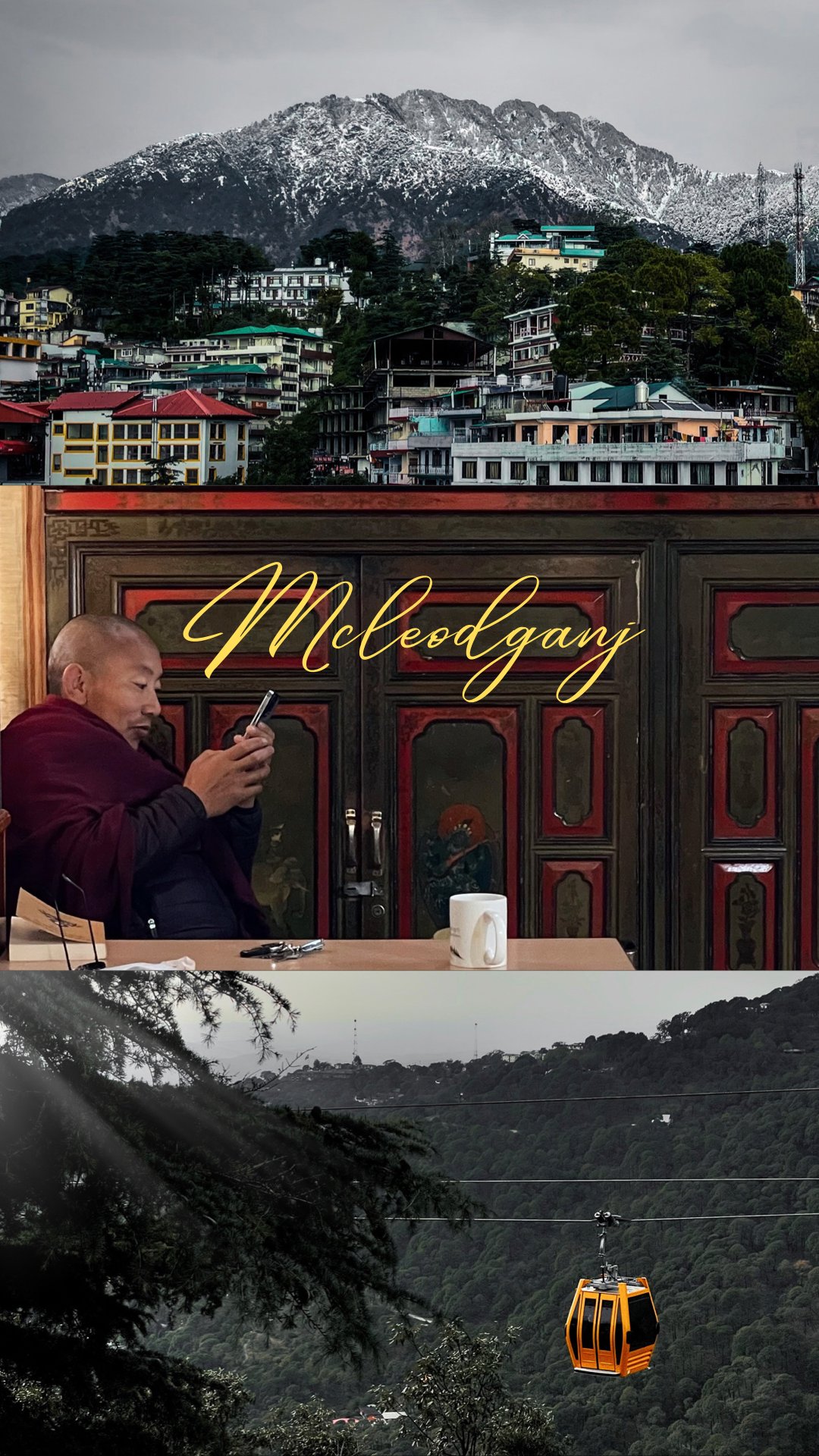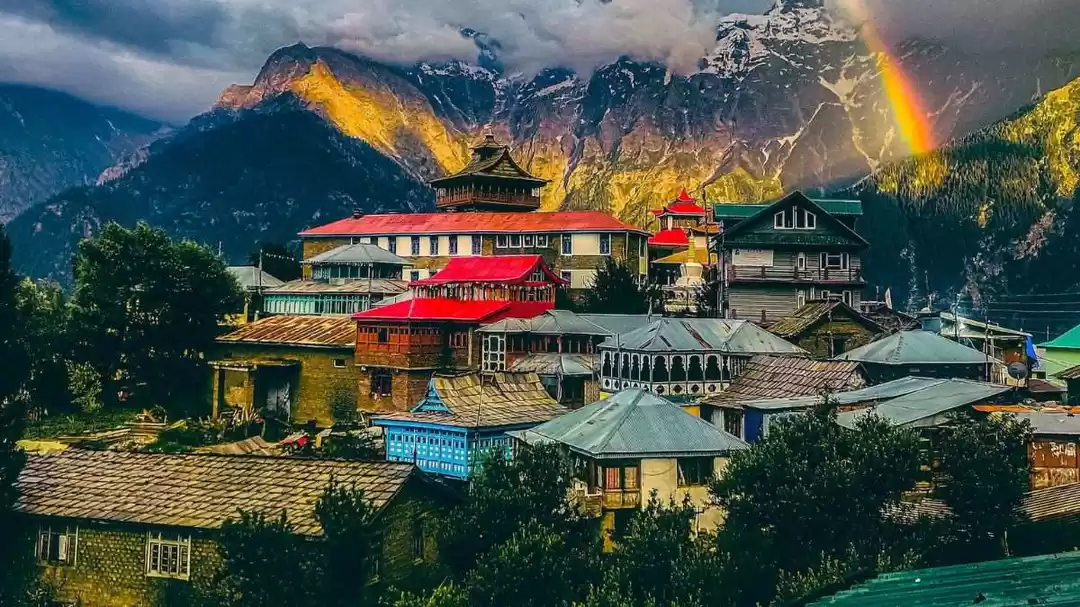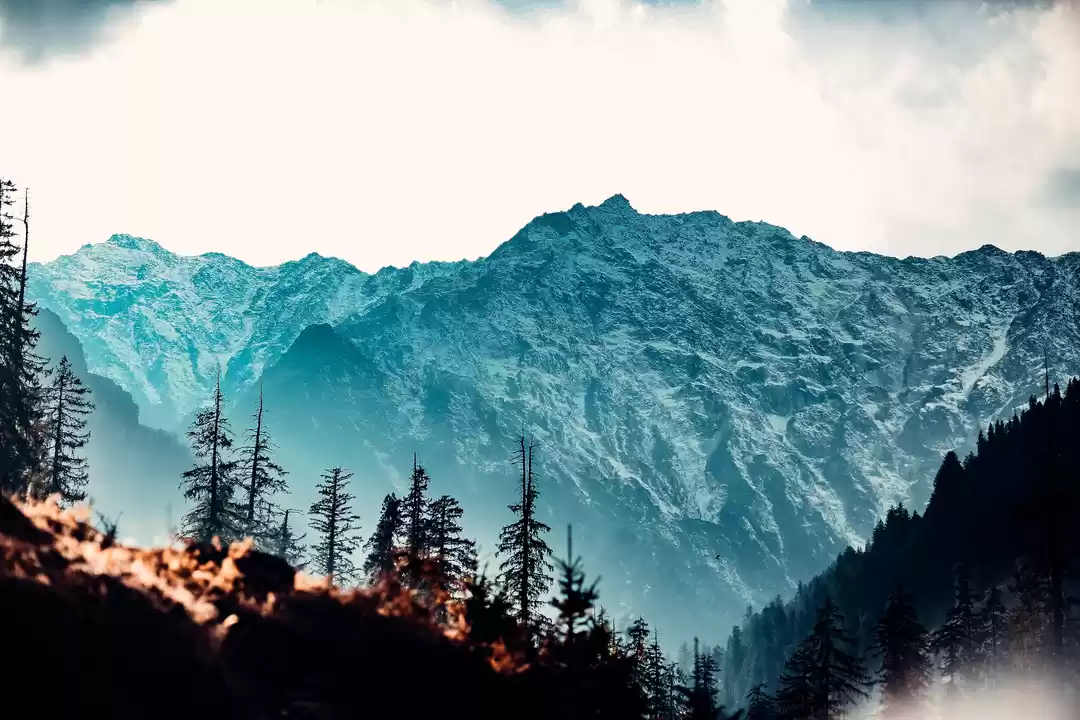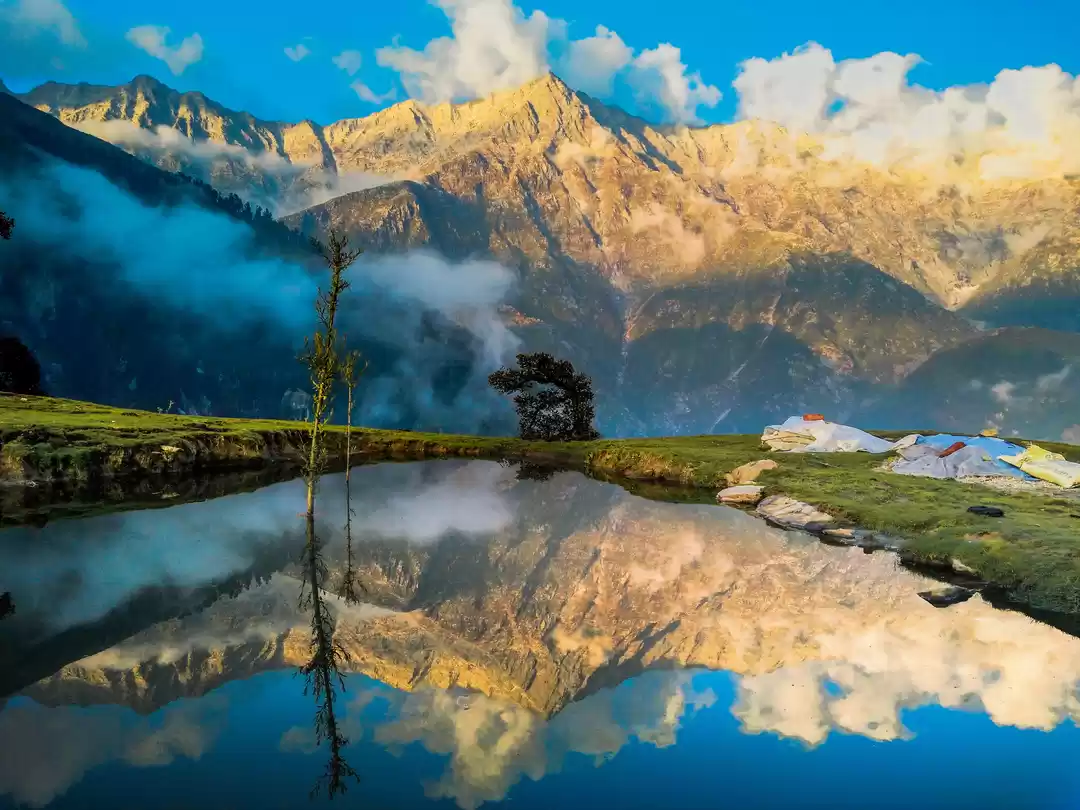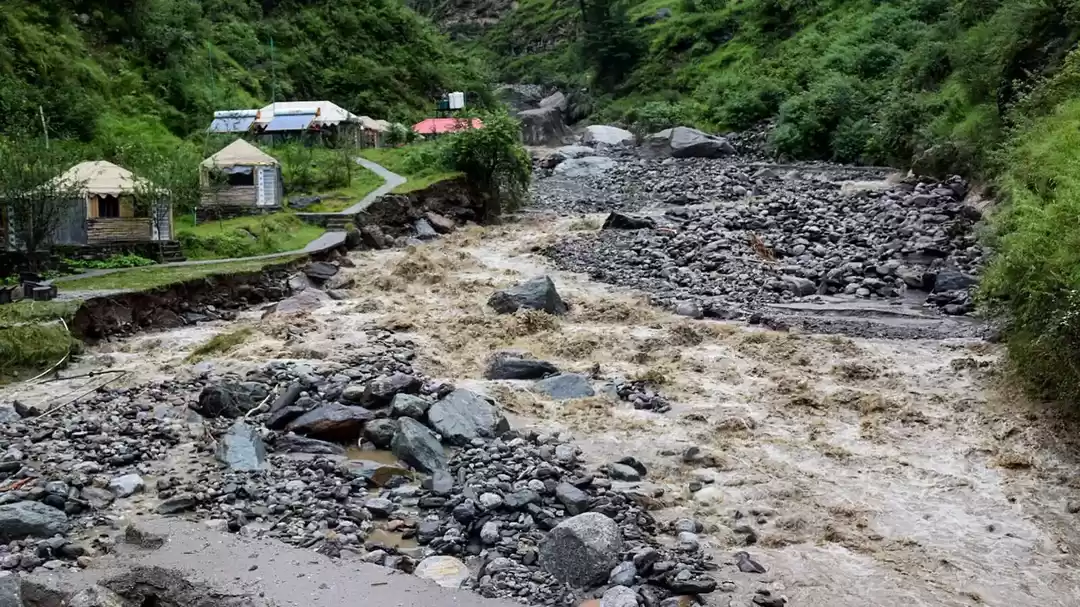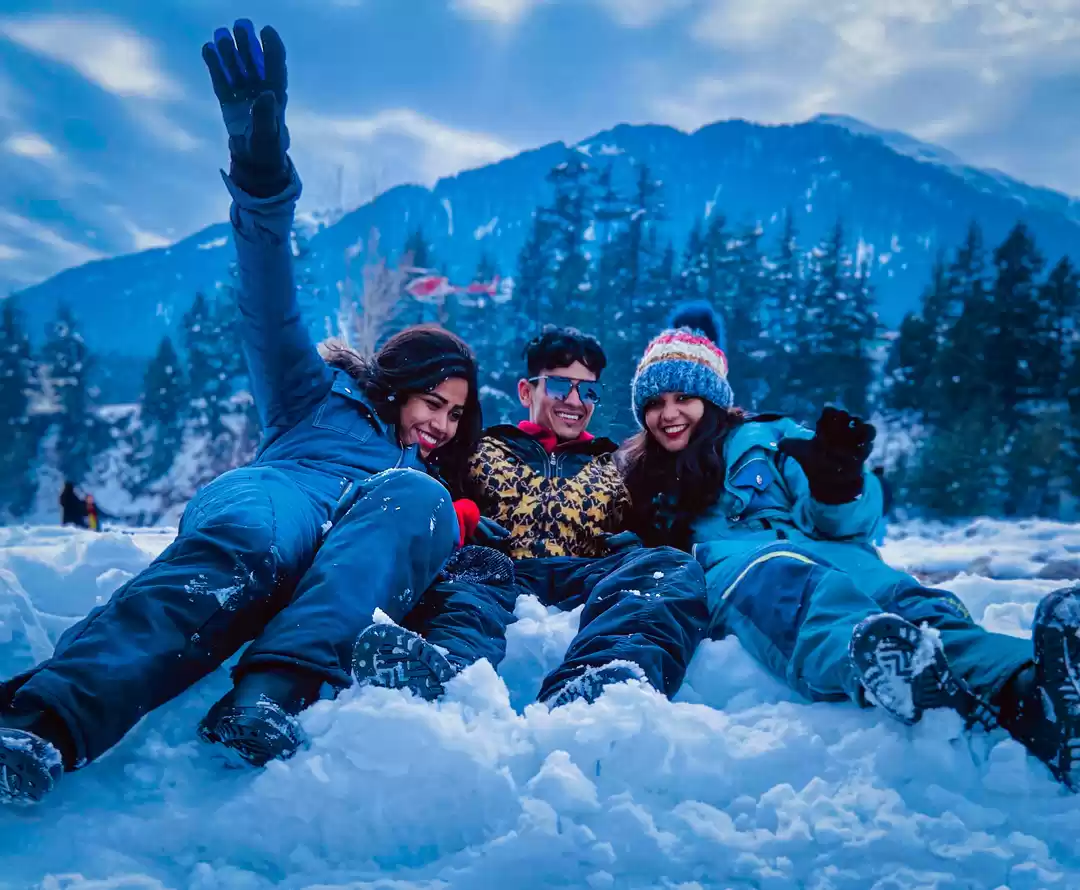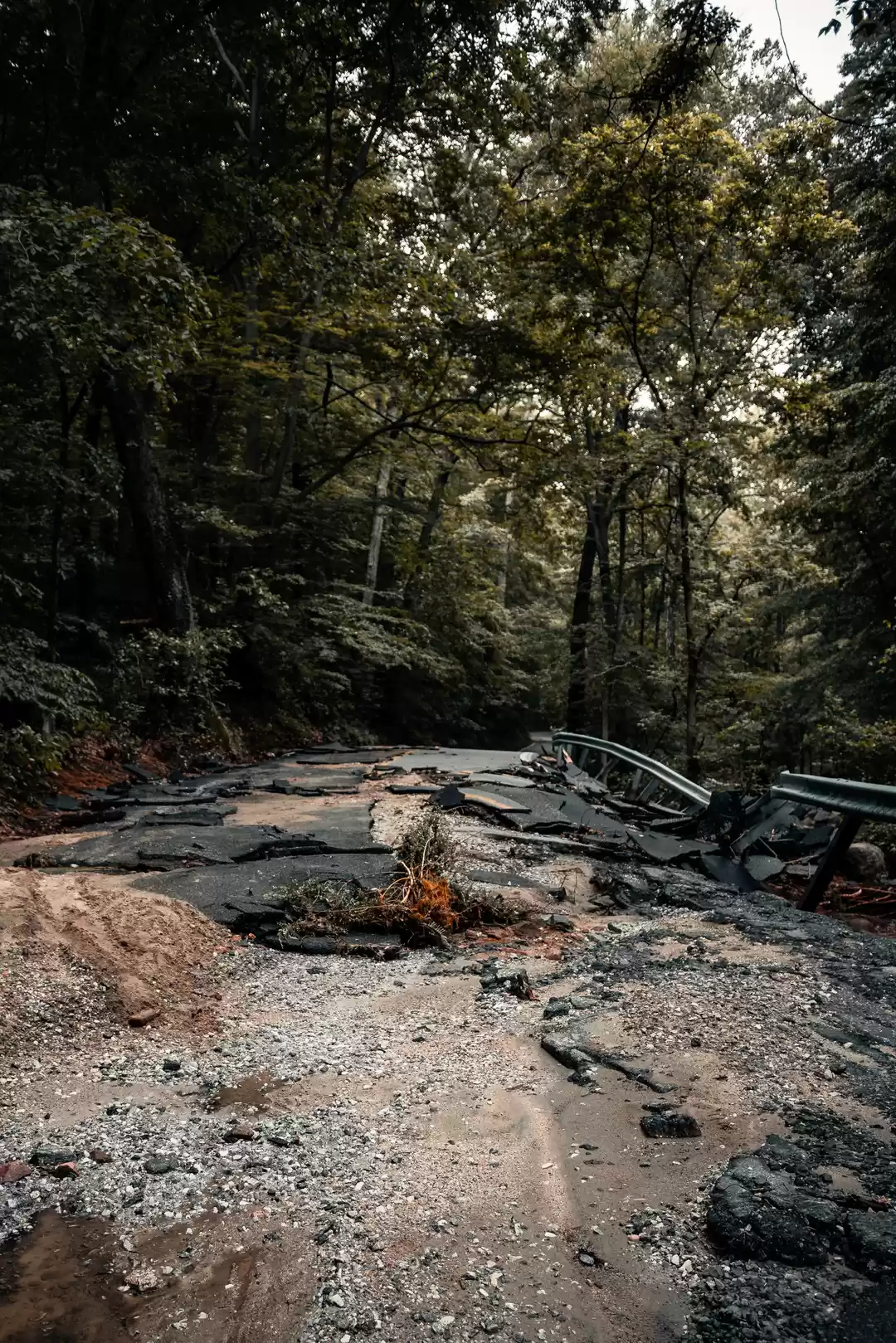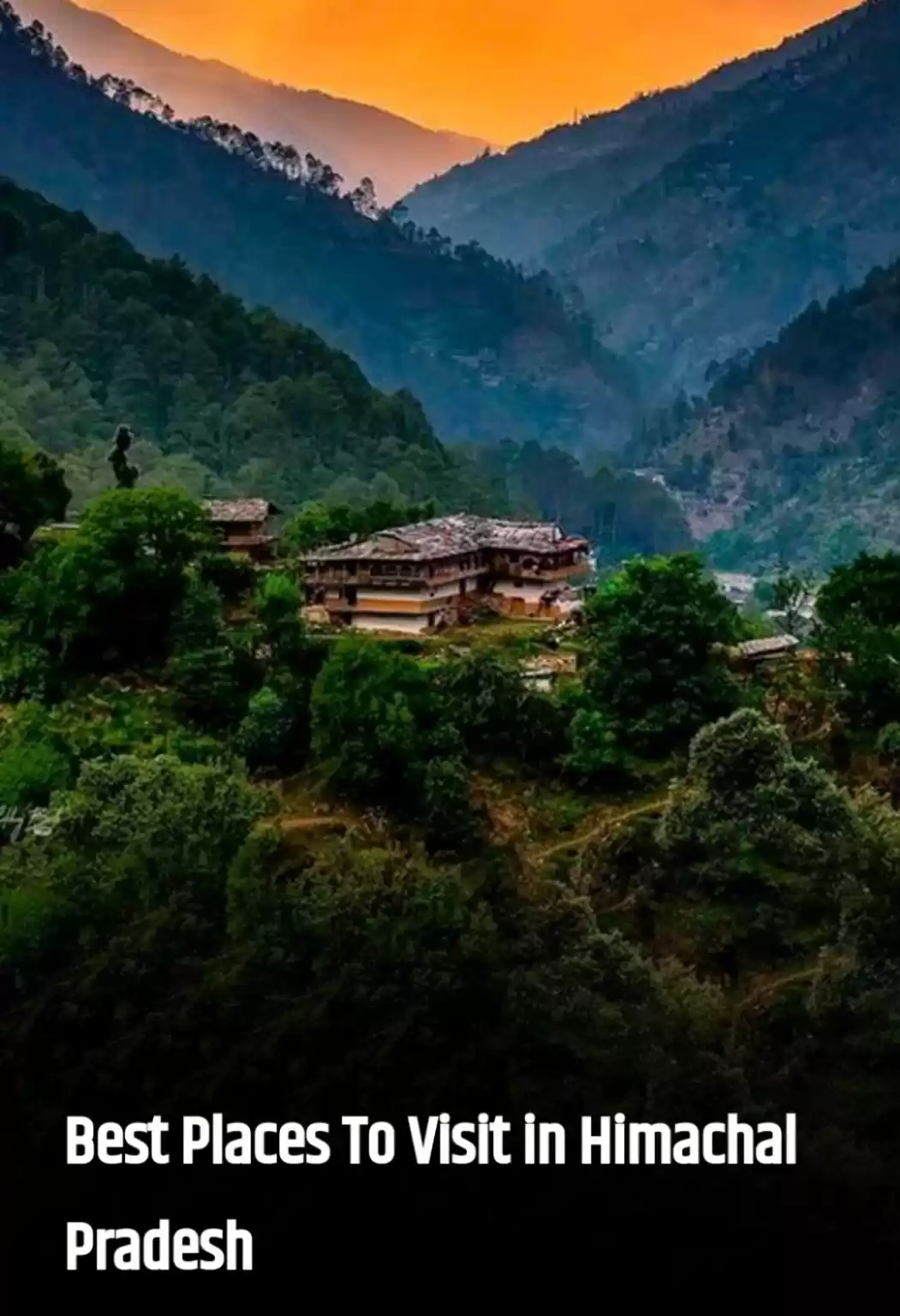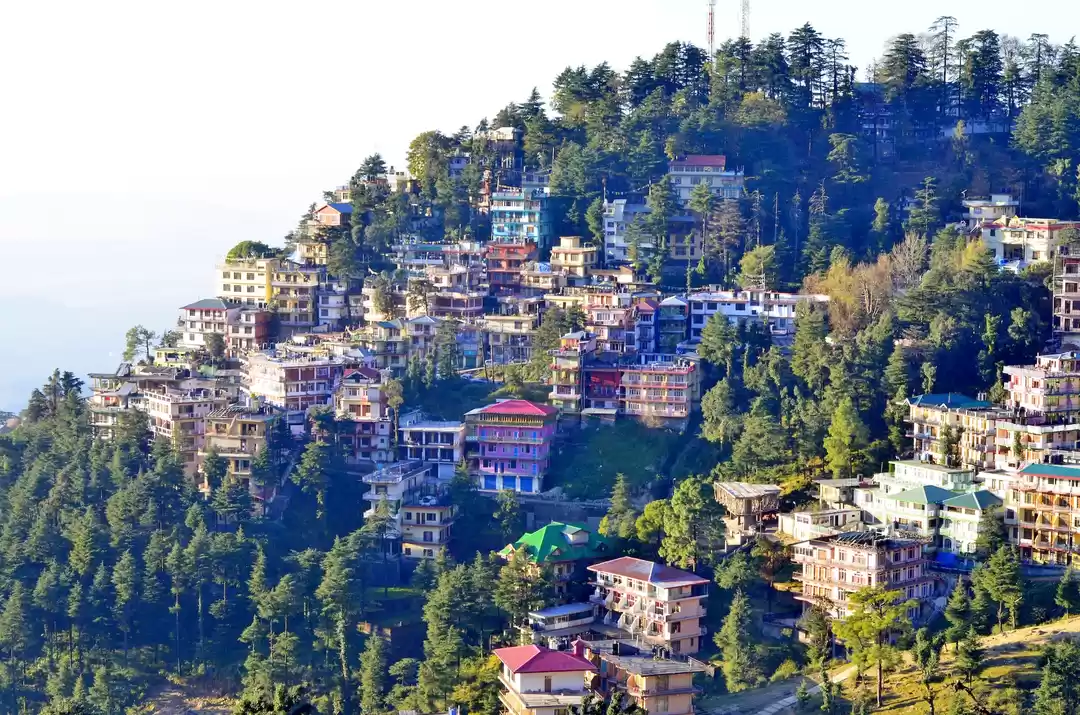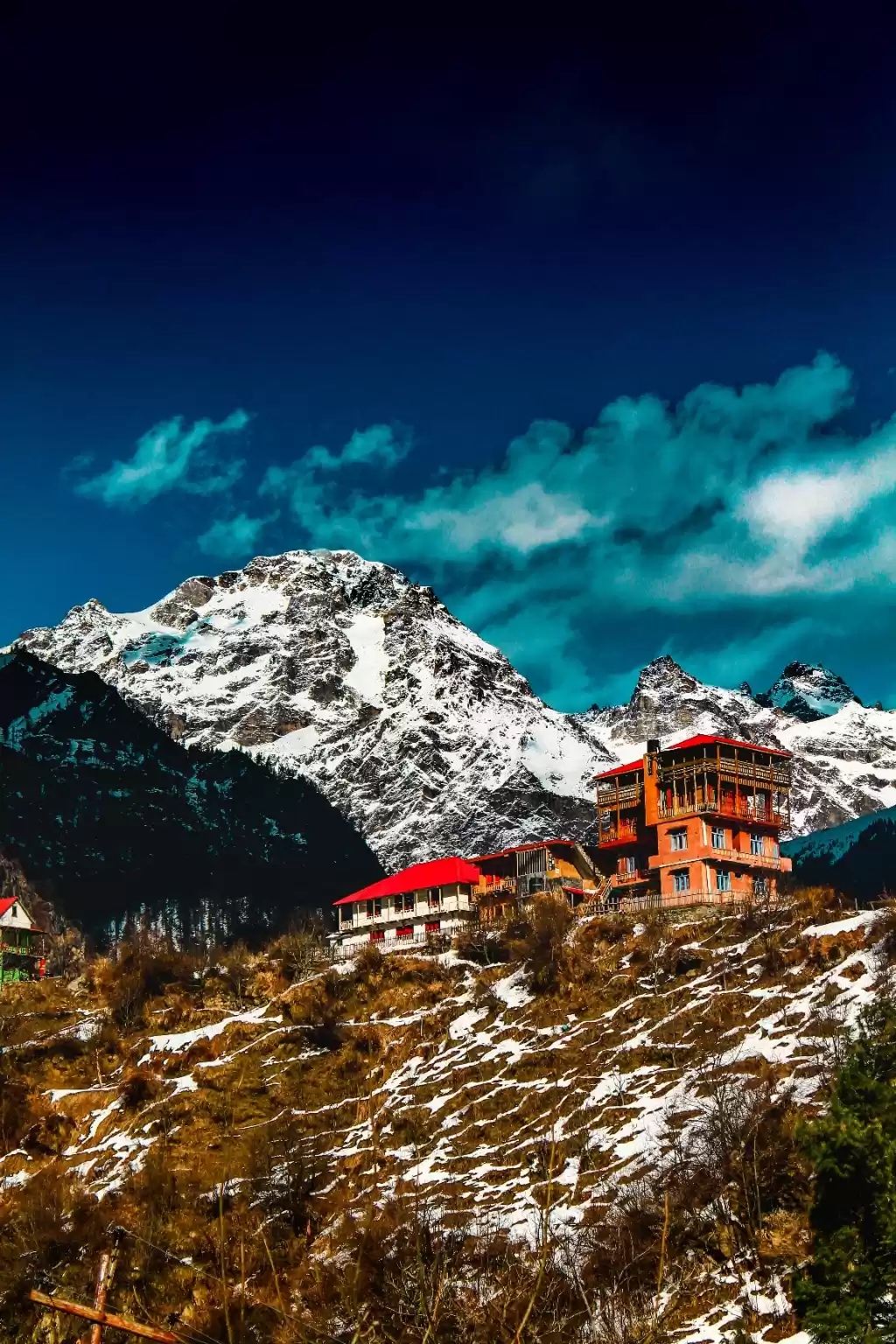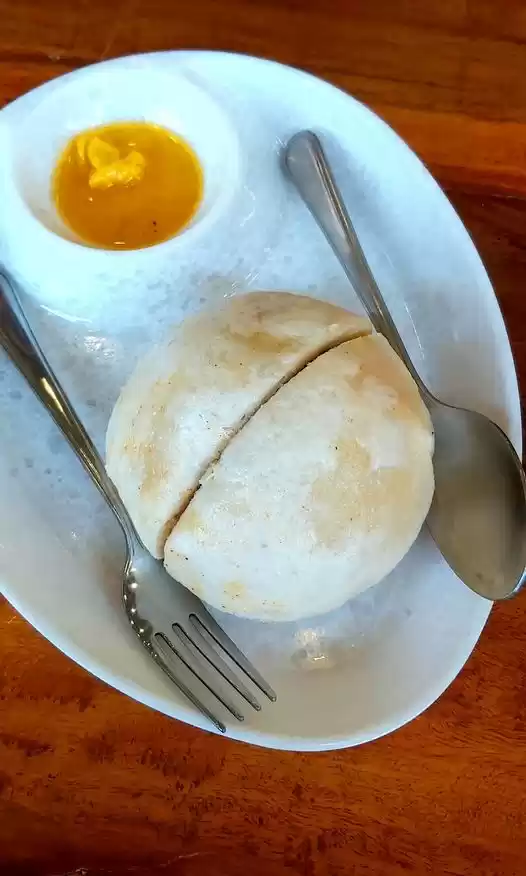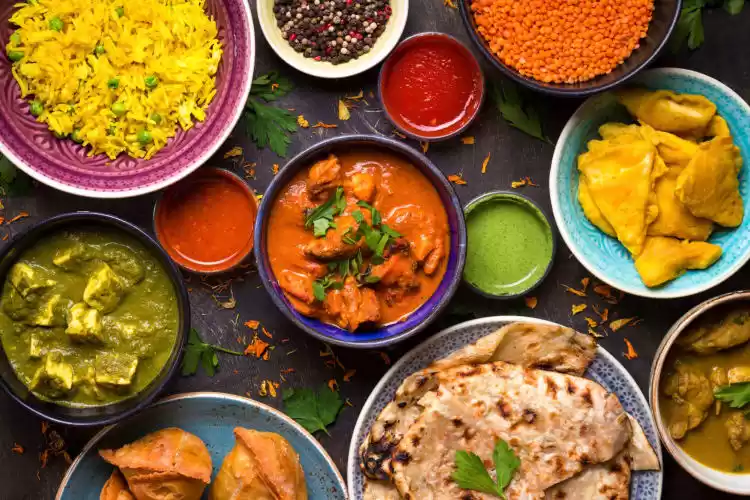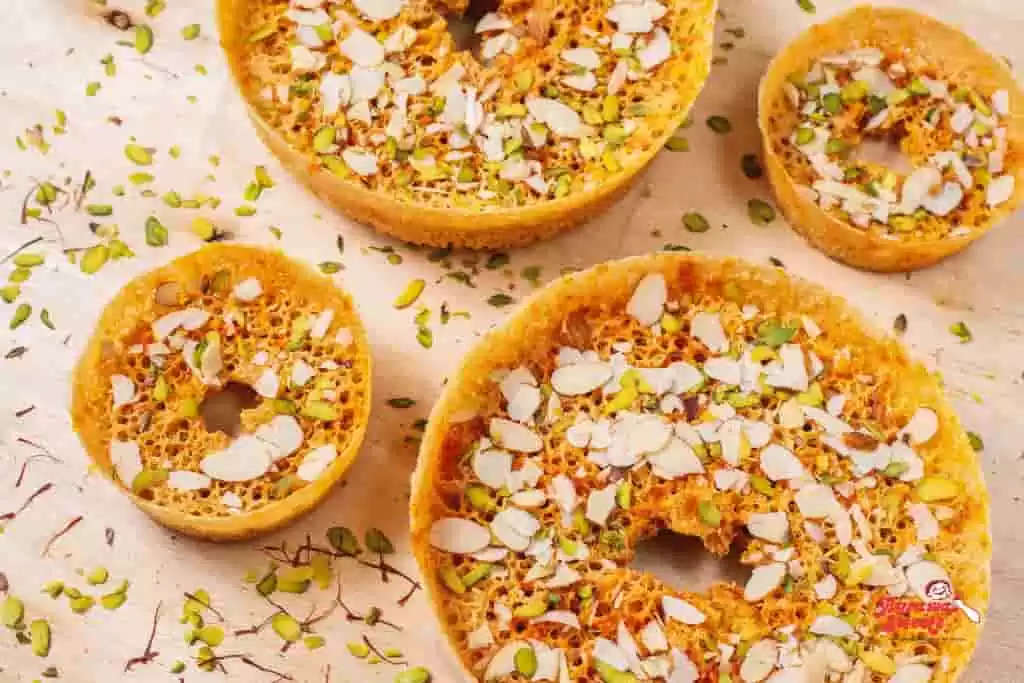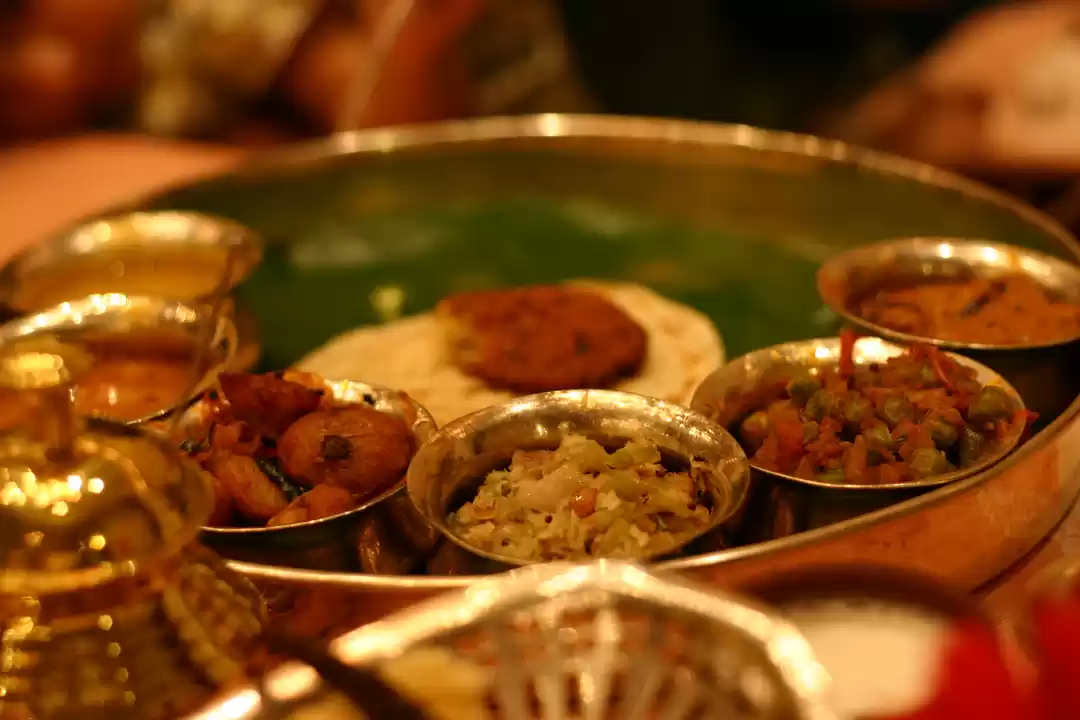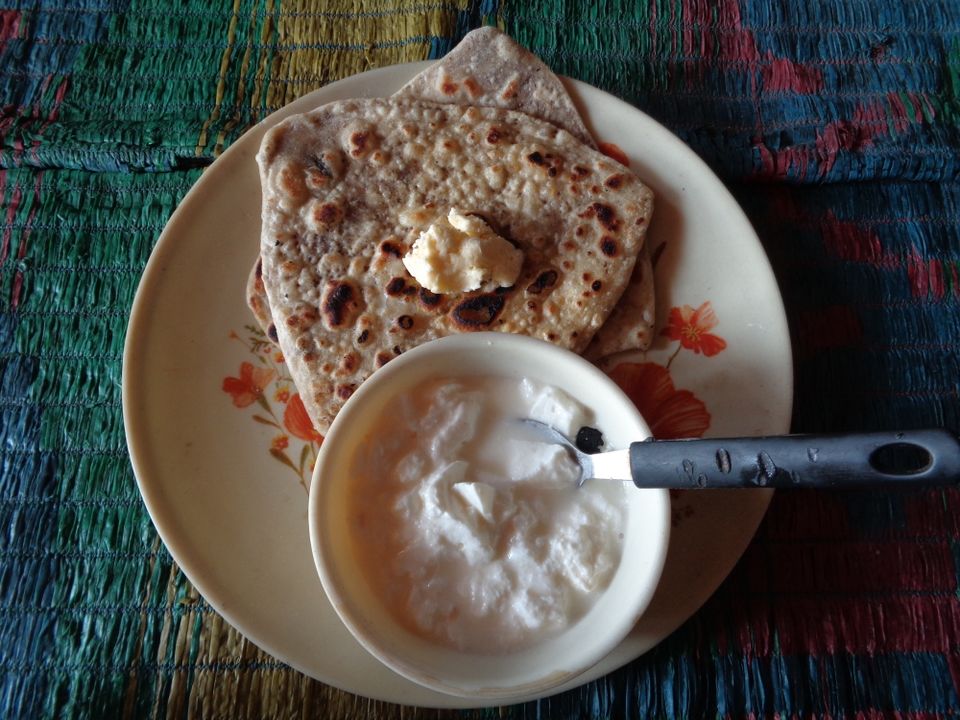
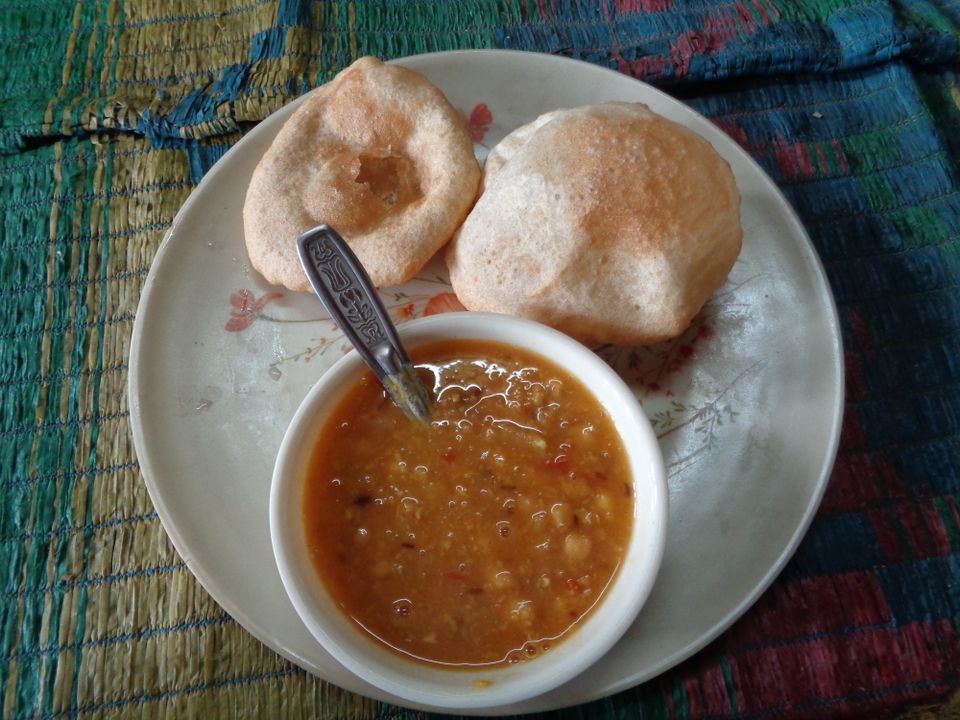
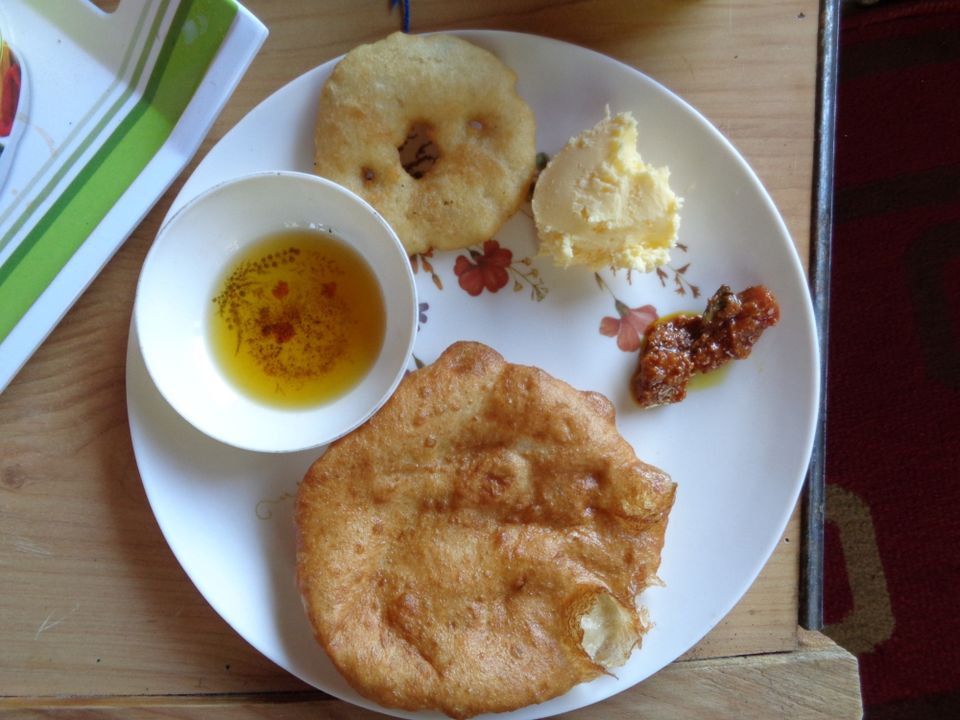
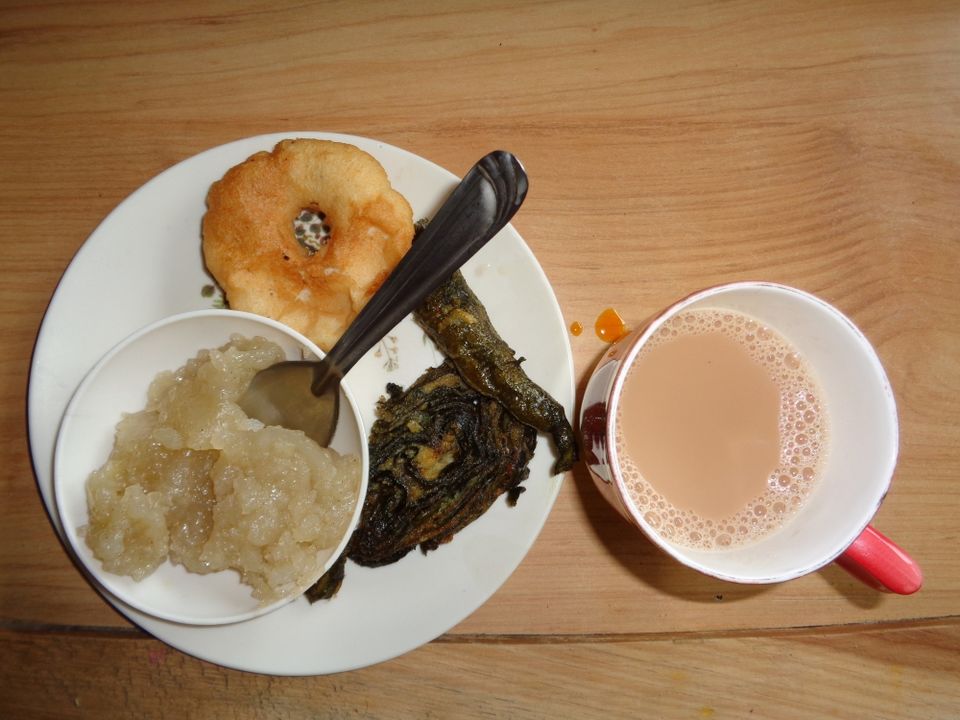
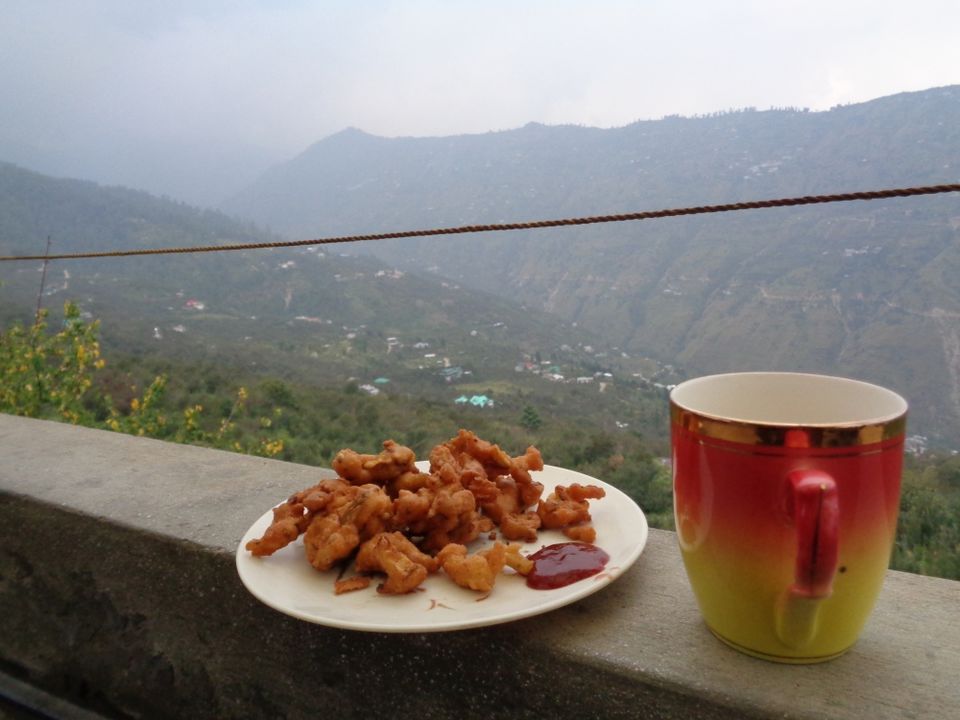
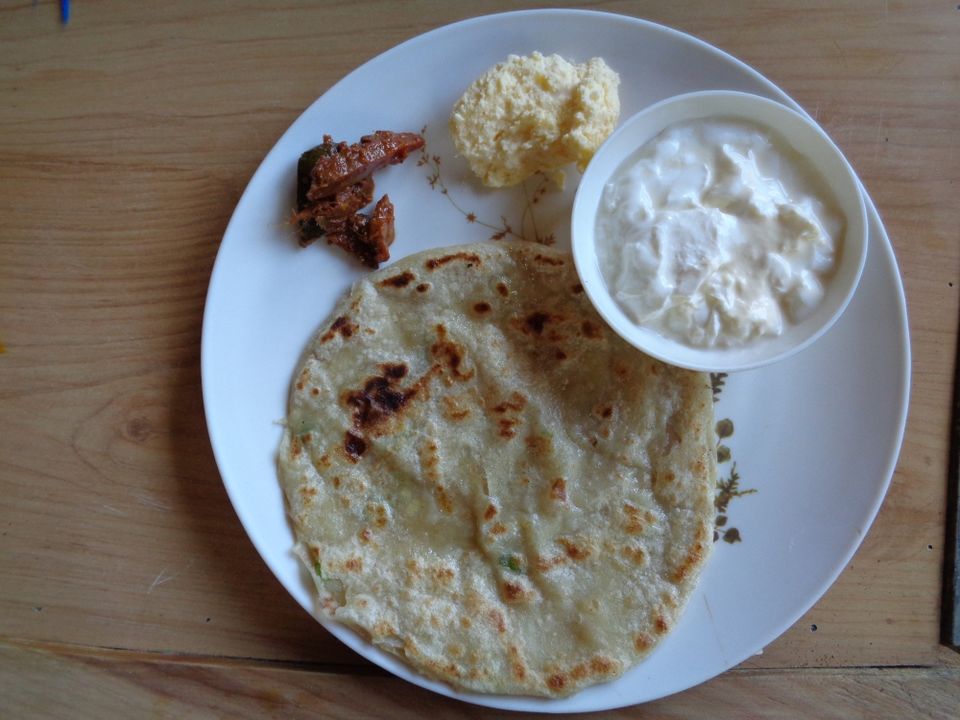
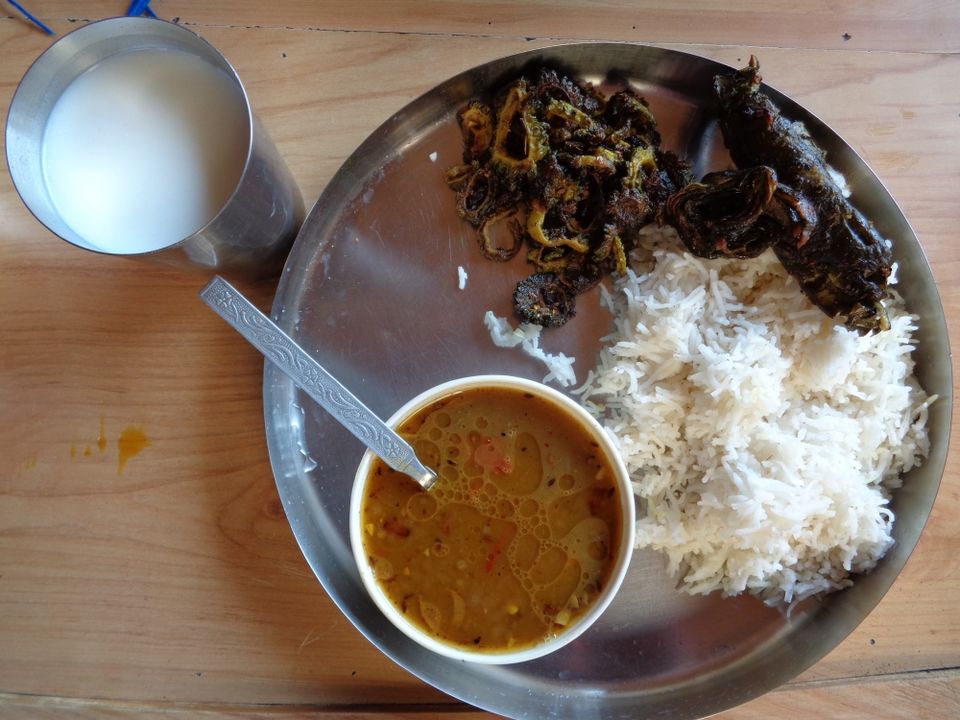
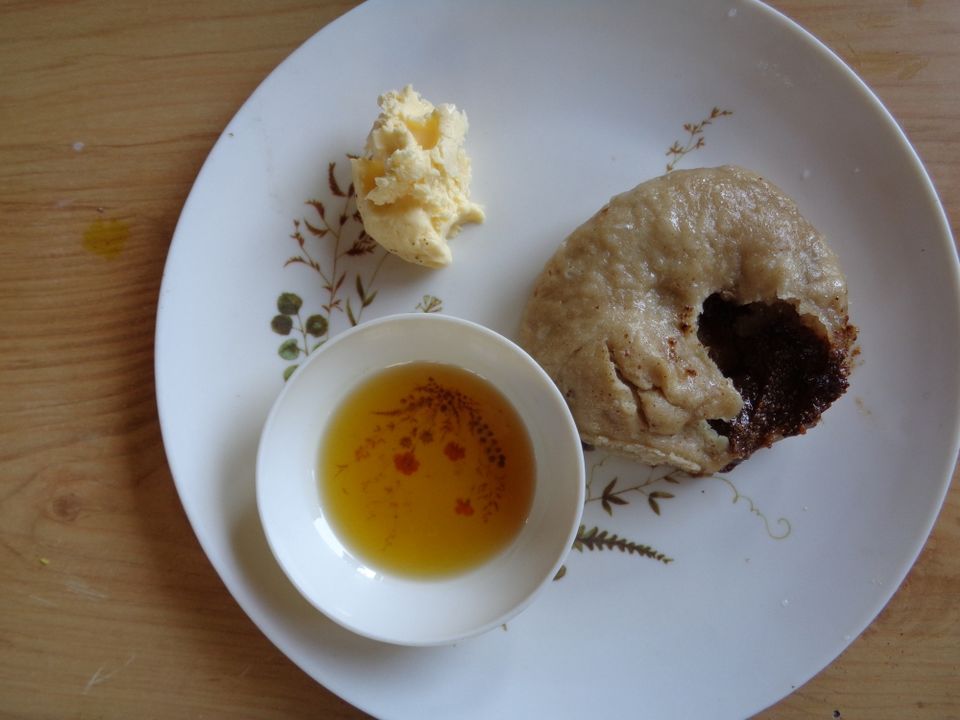
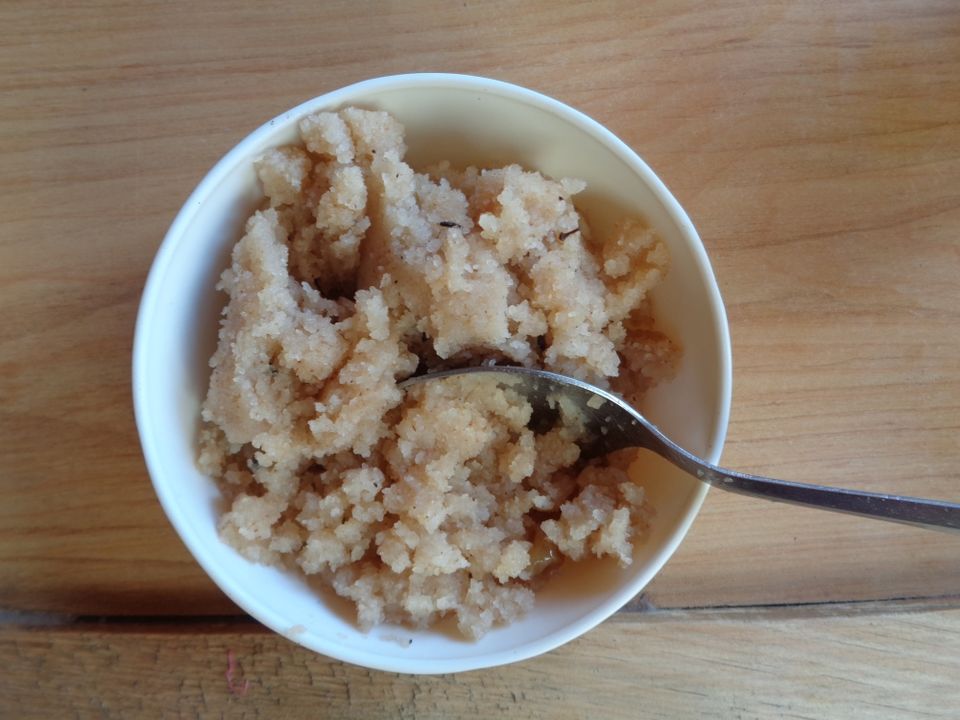
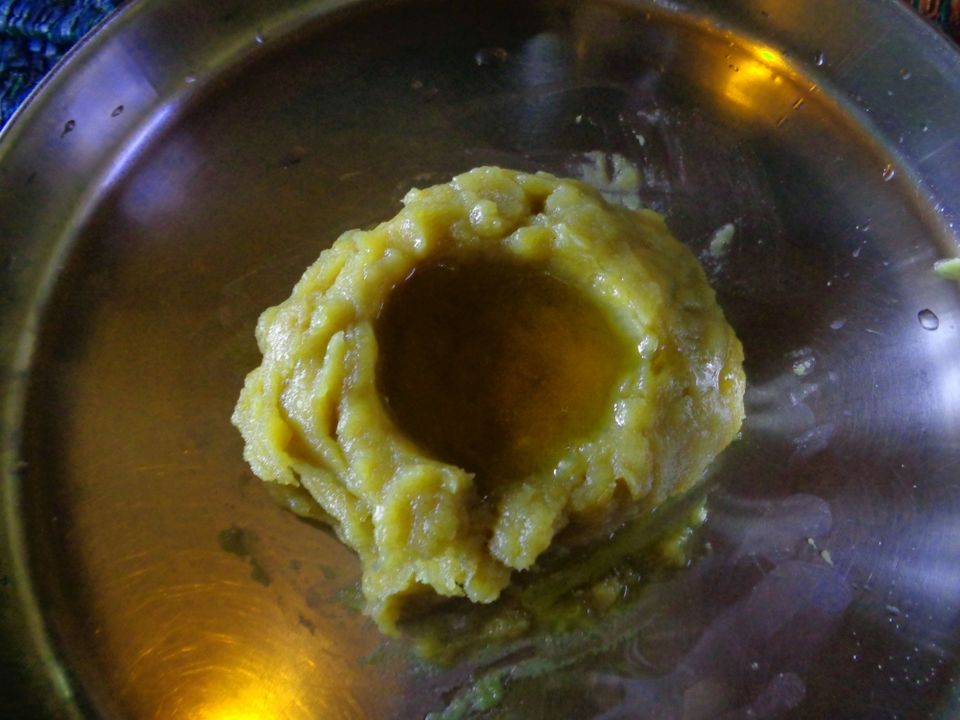
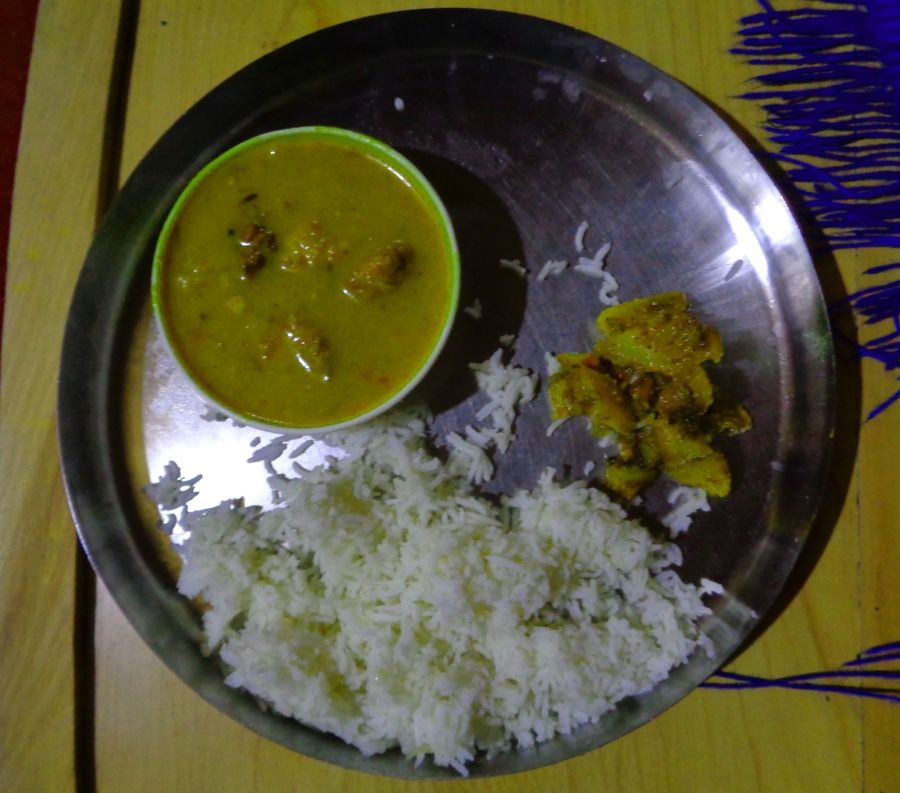
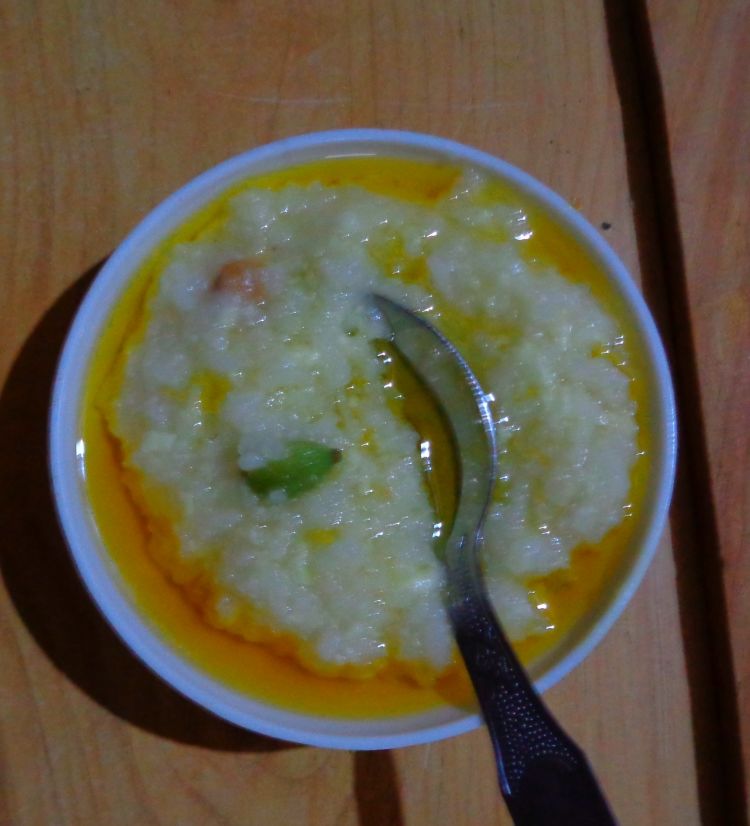
Local food, according to me is not just food, but a glimpse into the culture, tradition and lifestyle of a community. During my last trip to Himachal Pradesh, I was fortunate to get a taste of traditional Pahari/Himachali food. I stayed in two different homes and gorged on finger licking food in both. In some cases after gobbling up on half the food on my plate, it occurred to me that I should have taken a picture. So here are some of the dishes I ate. Please make sure you eat something before reading this post or keep something to eat immediately after, for the pictures may set your gastric juices flowing!!
I had visited Kharapathar and Ruhil Dhar, at an altitude of 8000 and 7000 feet above sea level respectively. The cold climate there makes ghee and butter a very important food item. I saw that ghee is liberally poured over most dishes like dal, parathas, puris, rice, and kheer and butter is served with parathas and puris. All homes in the villages own cows so milk and milk products are fresh and home made.
Other high protein food items that are commonly made is Chole, Rajma, chana dal and paneer dishes.
Parathas are the most common breakfast item. The varieties that I got to taste were ajwain paratha, aloo and paneer paratha, all served with curd, and dollops of butter. Eating those parathas served hot and fresh with the butter melting on them, and with the view of the mountains was an enhanced sensory experience.
One of the dishes I relished the most was siddu. It’s a steamed dish in which the outer covering is of wheat dough which is allowed to rise after adding yeast and the stuffing is of roasted banjeera/banjeeri powder. I couldn’t find the English word for banjira, but here are some pictures of the plant and the seeds. It tasted a bit like flaxseeds. I had both the savory siddu as well as the sweet siddu where banjira powder is mixed with jaggery to make the stuffing. I liked the sweet version better.
One of the days I was there, a festival dedicated to the Nature Gods was celebrated, as a token of thanksgiving for an abundant crop produce. A chira, a structure of wood and earth on which dry grass and flowers are offered, is worshipped in the belief that it will destroy pests that come after the Monsoon. This is followed by ‘Jagra’ where people in a cluster of villages gather to sing, dance and feast. A few special dishes are made during this period.
After worshipping the chira, halwa Puri is distributed amongst family members. The halwa was made of made of sooji/semolina with a generous amount of ghee and it was absolutely delectable. As soon as I was served this, I gobbled up one portion and didn’t have the space in my stomach for another puri, so here’s the picture only of the halwa.
Another dish was Pathroru or dhindhe, in which colocasia leaves are coated with gram flour, rolled, steamed and then fried. The same dish is also made in Maharashtra and Gujarat and is called aloowadi or patra. Sometimes instead of gram flour, the paste of soaked and ground black gram, called maash is used and both were equally tasty.
Nashashta, was another halwa made of wheat flour, sugar and ghee. It’s a long process where the wheat is soaked for several days in water till it becomes very soft. It is then crushed and strained to remove impurities. The semi-liquid is then cooked with sugar and ghee to make this lovely dish. I ate it with puris to balance the sweetness.
An interesting variation of the stuffed puri was Babru, in which is stuffing is of maash. This was served with butter, ghee and pickle and one puri was enough to fill my stomach. ‘Maash’ and is used in a variety of other dishes too. One such was the mash ke vade, in which the paste is made into small flat circles and deep fried. This too is served with butter and ghee.
On the last day before I left from Kharapathar, I was served another kind of halwa called ‘ghainda’. It’s made of roasted wheat flour and ghee. It was also served in an interesting manner. A dollop of the halwa is served of a plate and then a depression is made in the centre and ghee is poured into the well and you eat it by scooping out the outer portion, dipping it in ghee and then proceed towards the centre. I don’t remember the last time I must have consumed so much butter and ghee over a period of ten days.
While kadhi chawal and rajma chawal is quite common, I found that the Pahari rajma is much bigger in size than what one gets in the cities. Also one variation of the kadhi was made with maash rather than besan. I don’t know if it’s the location of the way it is prepared but wherever I ate rajma chawal in Himachal, it was out of the world. And last but not the least, my special gratitude to the lovely, adorable granny in one of the home-stays who prepared these delectable dishes with so much love and made sure I ate well.













